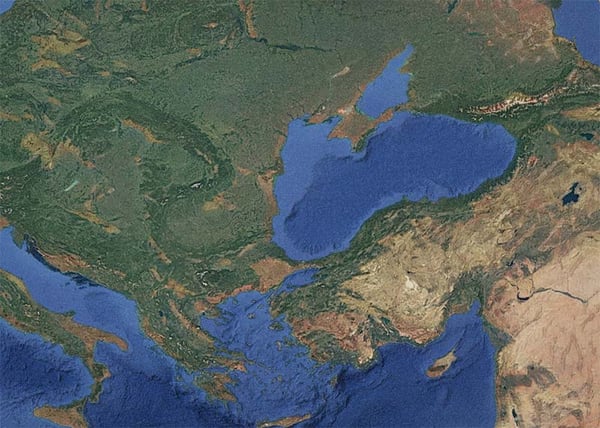Eastern Europe: 404 not found
Where is Eastern Europe?
Where exactly is Eastern Europe? Well, that depends on who you ask. Czechs, Poles, Hungarians, and Slovaks insist they're in Central Europe. The Baltics swear they're in Northern Europe. In the Balkans, fewer and fewer people want to be called Balkan, let alone Eastern European, and prefer Southeast Europe. And the list goes on. A Romanian geography textbook recently went viral for placing Romania and Moldova (!) firmly in Central Europe.
One thing is clear: fewer Europeans want to be associated with the ”Eastern” label. So they're rebranding, pushing their countries as far West, North, or South as possible.
Why? Because ”Eastern Europe” still connotes backwardness. It's seen as poor, corrupt, and intolerant, while the West is imagined as the land of prosperity, lawful governance, and equality.
This dates back to the Enlightenment, when the West began defining itself in opposition to an imagined East – seen as uncivilised, despotic, and irrational – which included the Ottoman Empire, the Middle East, and parts of Asia. It was during this period that the concept of ”Eastern Europe” was created as a sort of in-between zone between the two. Over time, that perception hardened as many of these regions lagged in industrialisation and had weaker central states.
The Cold War and the Iron Curtain that cut Europe into a democratic West and a communist East solidified this binary division. ”Eastern Europe” became shorthand in the West for authoritarian rule, crumbling economies, and empty shelves.
Since the fall of communism, especially with the EU's eastward expansion, the term has almost become a slur. Within the block, the East came to be seen as a place in need of help and in transition. As a result, countries that joined the EU have often been treated as second-class members, while those still outside are told they must ”catch up” before they can join.
Still, after decades of being cast as underdeveloped and unstable, and with an ongoing war at its edge, the urge to disassociate is only growing. This is especially true among younger generations born after the fall of communism, who want to distance themselves from Eastern European stereotypes.
Ironically, on the other end of this geo-delusion, Armenians and Georgians would love nothing more than to be called Eastern European. Why? Because their countries lie (mostly) in Asia, which, of course, is seen as even more chaotic, backward, and ”un-European”. So while the preferred label might differ, the trend is the same: push their countries elsewhere.
So maybe the question isn't ”Where is Eastern Europe?” but rather ”Who still wants to be part of it?” And for more and more people, the answer is: not me.

